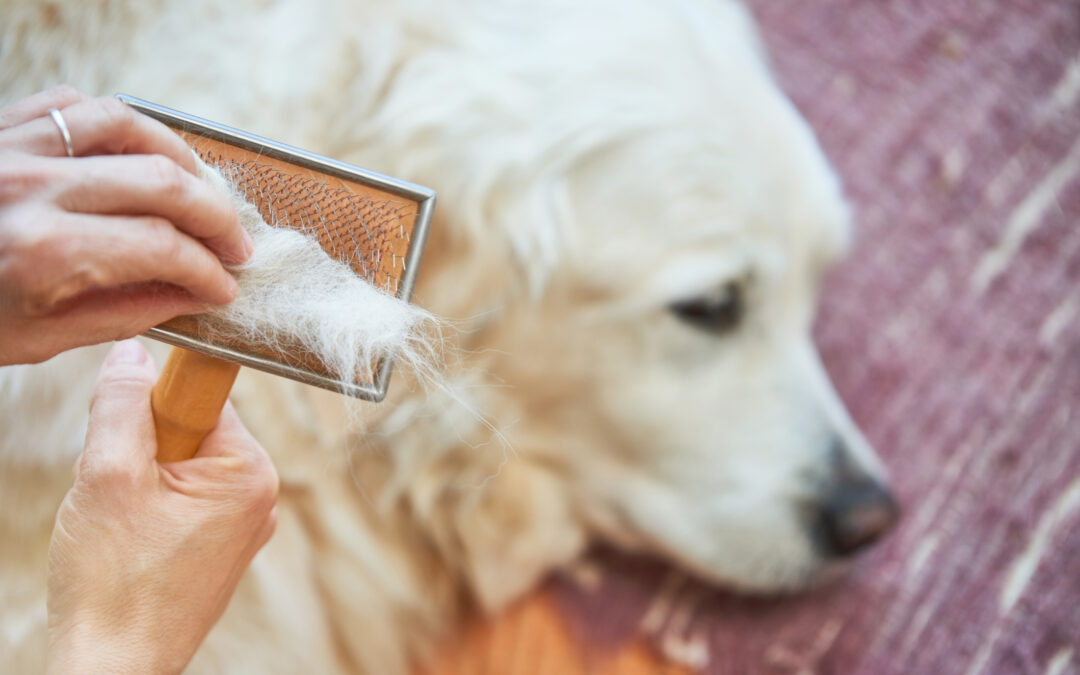
Why is My Dog Shedding in January? Understanding Seasonal Shedding
Share
As a responsible pet owner, you may have noticed that your dog's coat seems to thin out during January. You might wonder, why is my dog shedding in January? Shedding is a normal part of canine life, but it can sometimes cause anxiety for those who are attentive to their pets' health. In this article, well explore the reasons behind seasonal shedding and provide practical tips for managing it effectively.
January typically brings colder weather, which can lead dogs to shed more than usual. The reason for this is often linked to their instinctive ability to regulate body temperature. Lets delve deeper into the various factors that contribute to this behavior.

Understanding Seasonal Shedding
Seasonal shedding, commonly referred to as blowing coat, is a direct response to changes in the environment. When temperatures drop in January, many dogs go through a significant transition. This can result in increased shedding. Some breeds are more sensitive to cold, so their shedding patterns may vary more during this time.
Fur Types and Shedding Patterns
Dogs come with a variety of fur types, including single and double coats. Breeds with double coats tend to shed more, especially in winter, while those with single coats may shed less. Common double-coated breeds include:
- German Shepherd
- Husky
- Golden Retriever
These breeds often experience heightened shedding in January as they adjust to the colder temperatures. Knowing your dog's coat type is essential for effectively managing shedding.

Environmental Influences
In addition to natural shedding, environmental aspects can exacerbate the issue. For example, indoor heaters can dry out your dogs skin, leading to excessive shedding. Its crucial to consider your home environment. Here are some tips to help you manage this:
- Maintain humidity levels in your home.
- Ensure your dog stays hydrated.
- Think about using a humidifier.
Skin Health and Shedding
Keeping an eye on skin health is paramount. Many dogs face skin issues that can result in abnormal shedding. Allergies, infections, or parasites are common culprits. Regular veterinary visits can help maintain your dogs skin health. If you notice any changes in your dog's coat or skin, be sure to consult a veterinarian.

Nutrition's Role in Shedding
Your dogs diet significantly impacts coat health and shedding patterns. A balanced diet full of essential fatty acids, vitamins, and minerals can help minimize shedding. Aim to include:
- Omega-3 fatty acids
- High-quality protein sources
- Fruits and vegetables
For tailored dietary advice, consider consulting your veterinarian.
Grooming Strategies for Shedding Control
Establishing a regular grooming routine during shedding periods can help manage the amount of fur in your home. Here are some effective strategies to consider:
- Brush your dog regularly using appropriate grooming tools.
- Use de-shedding tools or shedding blades.
- Give your dog occasional baths to maintain a clean, healthy coat.
Regular grooming not only reduces shedding but also allows you to monitor your dogs skin for any abnormalities.

When Shedding Becomes a Concern
While shedding is a normal aspect of dog ownership, watch for signs that may indicate excessive shedding. If your dog is losing clumps of fur or developing bald patches, its vital to seek veterinary advice. Issues such as hormonal imbalances, skin infections, or significant stress may contribute to these behaviors.
Stress and Anxiety Effects on Shedding
Just like us, dogs can experience stress and anxiety, which can affect their health and behaviors. If your dog has experienced any substantial changeslike a move or the loss of a family memberthey may shed more. Creating a safe and comforting environment for your pet can help lower their stress levels.
Myths and Misconceptions About Shedding
One prevalent myth is that all dogs shed during the same seasons. However, shedding patterns can differ drastically between breeds, and a dog's age and health also play significant roles. Another common misconception is that indoor dogs do not shed as much as outdoor dogs; in fact, indoor dogs can shed just as much, particularly in winter.
Dealing with Dog Shedding in January
Taking proactive steps to manage shedding can enhance comfort for both you and your dog. Simple changes, such as keeping your living space tidy and using specialized vacuum attachments for pet hair, can help keep your environment fur-free. You might also want to investigate products designed specifically to reduce shedding.
For additional guidance on managing dog shedding, feel free to consult this useful resource: Dog Shedding: What to Expect.
Conclusion
By understanding why my dog is shedding in January, you can develop a strategy for managing shedding throughout the season. With a mix of proper nutrition, frequent grooming, and awareness of environmental factors, pet owners can help their furry companions maintain healthy coats. Stay vigilant about any changes in your dogs shedding patterns and consult a veterinarian if concerns arise.
Through consistent care, you can reduce shedding and promote a happy, healthy dog, even in the coldest winter months.
Frequently Asked Questions
1. How often should I groom my dog during shedding seasons?
During shedding times, it's advisable to groom your dog every few days, with heavier-shedding breeds needing more frequent grooming.
2. Can diet really affect my dog's shedding?
Definitely! A balanced diet with essential nutrients plays a significant role in enhancing your dog's coat health and reducing excessive shedding.
3. When should I be concerned about my dog's shedding?
If you observe your dog losing large clumps of fur or developing bald areas, its best to consult a veterinarian for an evaluation.
As an Amazon Associate, I earn from qualifying purchases.
